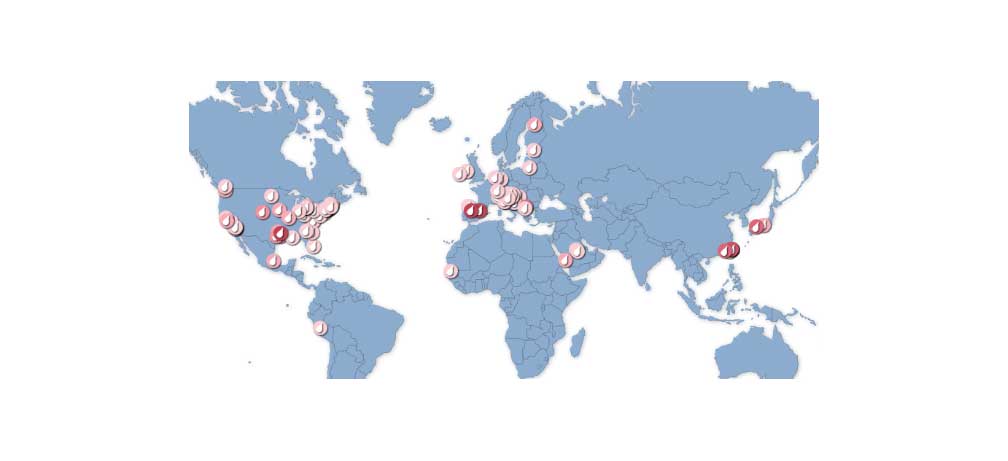Global Reach, Local Touch: International Ecommerce for Increased Sales
Expanding your ecommerce business internationally opens up a world of opportunities, but it also presents unique challenges. Successfully navigating the global market requires a strategic approach that blends a broad vision with meticulous attention to local details. This article explores the key considerations for selling internationally and how to optimize your strategy for increased sales.
1. Market Research: Understanding Your Global Audience
Before diving into a new market, thorough research is paramount.
- Demand Analysis: Identify countries with high demand for your products. Analyze market size, growth potential, and competitive landscape.
- Cultural Nuances: Understand cultural differences in purchasing behavior, communication styles, and product preferences. Adapt your marketing and product offerings accordingly.
- Legal and Regulatory Compliance: Familiarize yourself with import/export regulations, customs duties, taxes (VAT, GST), and product safety standards.
2. Localization: Speaking the Language of Your Customers
Localization goes beyond simple translation. It involves adapting your entire online experience to resonate with local customers.
- Website Translation: Translate your website into the target language, ensuring accuracy and cultural relevance.
- Currency and Payment Options: Offer local currency options and preferred payment methods. Consider popular digital wallets, bank transfers, and local credit cards.
- Customer Support: Provide multilingual customer support through email, chat, or phone.
- Localized Marketing: Tailor your marketing campaigns to local holidays, events, and cultural sensitivities.
3. Shipping and Logistics: Delivering a Seamless Experience
International shipping can be complex, but it’s crucial for customer satisfaction.
- Shipping Options: Offer a variety of shipping options, including express and standard delivery.
- Accurate Shipping Costs: Provide transparent and accurate shipping costs at checkout. Consider using real-time shipping rate APIs.
- Customs and Duties: Clearly communicate potential customs duties and taxes to customers. Offer options for prepaid duties to streamline the process.
- Return Policy: Establish a clear and easy-to-understand return policy for international customers.
4. Optimized Website and User Experience (UX)
Your website should provide a seamless and user-friendly experience for international customers.
- Mobile Optimization: Ensure your website is mobile-responsive, as mobile commerce is prevalent in many international markets.
- Fast Loading Speeds: Optimize your website for fast loading speeds, especially in regions with slower internet connections.
- Intuitive Navigation: Make it easy for customers to find products and information.
- Trust Signals: Display trust badges, security certifications, and customer reviews to build confidence.
5. International SEO and Marketing
Reaching your target audience requires a strategic approach to SEO and marketing.
- Keyword Research: Conduct keyword research in the target language to identify relevant search terms.
- Localized SEO: Optimize your website for local search engines, using hreflang tags to indicate language and regional targeting.
- Social Media Marketing: Utilize social media platforms popular in the target market.
- Influencer Marketing: Partner with local influencers to reach a wider audience.
- Local Advertising: Consider advertising on local websites and publications.
6. Customer Service: Building Global Relationships
Exceptional customer service is essential for building long-term customer relationships.
- Multilingual Support: Provide customer support in the target language.
- Time Zone Considerations: Offer support during local business hours.
- Proactive Communication: Keep customers informed about their order status and shipping updates.
- Feedback and Reviews: Encourage customers to leave feedback and reviews to build trust and improve your service.
7. Leveraging Technology and Partnerships
Utilize technology and partnerships to streamline your international operations.
- Ecommerce Platforms: Choose an ecommerce platform that supports multilingual and multicurrency functionality.
- Payment Gateways: Integrate with international payment gateways to offer local payment options.
- Logistics Providers: Partner with reliable logistics providers with experience in international shipping.
- Translation Services: Use professional translation services to ensure accuracy and cultural relevance.
Key Considerations for Increased Sales:
- Personalization: Tailor product recommendations and marketing messages to individual customer preferences.
- Promotions and Discounts: Offer localized promotions and discounts to attract customers.
- Loyalty Programs: Implement loyalty programs to encourage repeat purchases.
- Data Analysis: Track and analyze your international sales data to identify trends and optimize your strategy.
By carefully considering these factors and adapting your ecommerce strategy to the unique needs of each international market, you can unlock significant growth potential and build a successful global business.




